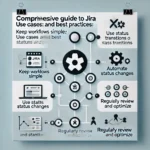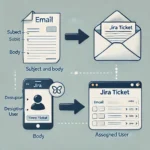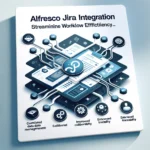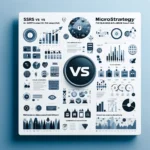Optical Character Recognition (OCR) and Azure Document Intelligence are two technologies that play significant roles in document management and automation. This comprehensive guide explores the differences between OCR and Azure Document Intelligence, their respective features, use cases, and frequently asked questions (FAQs) to help you understand which solution best fits your business needs.
Table of Contents
ToggleOCR (Optical Character Recognition):
OCR is a technology used to convert different types of documents, such as scanned paper documents, PDF files, or images captured by a digital camera, into editable and searchable data. It extracts text from these documents, making it possible to digitize and process the information contained within them.
Key Features of OCR (Optical Character Recognition)
- Text Extraction: Converts scanned documents, images, or PDFs into editable and searchable text formats.
- Document Digitization: Enables the conversion of paper-based documents into digital formats for easier storage and retrieval.
- Data Entry Automation: Automates data entry tasks by extracting text from invoices, forms, receipts, and other documents.
- Basic Layout Recognition: Recognizes basic document layout elements such as paragraphs, headings, and tables.
- Language Support: Supports recognition and conversion of text in multiple languages.
- Accessibility: Enhances accessibility by converting printed text into readable formats for visually impaired individuals.
- Integration: Often integrated with other software for document management systems and business applications.
- Speed: Provides fast text recognition and conversion, improving efficiency in document processing workflows.
- Accuracy: Offers high accuracy in text recognition, although results may vary based on document quality and clarity.
- Cost-Effectiveness: Generally more cost-effective for basic text extraction and document digitization tasks.
Azure Document Intelligence:
Azure Document Intelligence, part of Microsoft Azure’s AI and machine learning services, goes beyond traditional OCR capabilities. It leverages advanced AI models to extract valuable insights and metadata from documents. This includes understanding the context, structure, and meaning of the content, which enhances document processing, classification, and analysis.
Key Features of Azure Document Intelligence
- Advanced AI Models: Utilizes advanced AI and machine learning models to understand document context, structure, and semantics.
- Document Understanding: Analyzes content to extract meaningful insights beyond basic text extraction.
- Automation: Automates complex document processing workflows, including classification, extraction, and analysis.
- Data Extraction: Extracts structured data such as invoice details, customer information, or legal terms from documents.
- Integration with Azure Services: Seamlessly integrates with Azure AI services, Cognitive Services, and other Azure tools for enhanced functionality.
- Compliance and Governance: Ensures compliance with regulatory requirements through automated document classification and retention policies.
- Customization: Offers customization options to tailor document processing workflows to specific business needs.
- Scalability: Scales to handle large volumes of documents and growing business requirements.
- Security: Implements robust security measures such as encryption and access controls to protect sensitive document data.
- Business Insights: Provides actionable insights from document data for informed decision-making and strategic planning.
Differences Between OCR and Azure Document Intelligence
1. Core Functionality:
- OCR: Focuses primarily on converting scanned documents or images into editable text formats (e.g., Word or PDF).
- Azure Document Intelligence: Integrates OCR capabilities but extends beyond to include AI-powered document understanding, classification, and data extraction.
2. Document Understanding:
- OCR: Extracts text and basic layout information from documents.
- Azure Document Intelligence: Analyzes content to derive context, structure, and semantics, enabling deeper understanding and automation of document workflows.
3. Automation and Integration:
- OCR: Provides text extraction for basic automation tasks but requires additional tools for advanced processing and integration.
- Azure Document Intelligence: Seamlessly integrates with Azure services for enhanced automation, data extraction, and integration into business applications.
4. Cognitive Services:
- OCR: Often a component of broader cognitive services but focuses on text recognition and basic document processing.
- Azure Document Intelligence: Offers a suite of cognitive services tailored for document processing, including text analytics, entity recognition, and sentiment analysis.
Comparison table of OCR and Azure Document Intelligence:
| Feature | OCR | Azure Document Intelligence |
|---|---|---|
| Primary Functionality | Text extraction from scanned documents, images, and PDFs | Advanced document understanding using AI models |
| Automation | Basic automation for data entry tasks | Advanced automation of document workflows |
| Document Understanding | Basic layout recognition | Deep analysis of content, context, and semantics |
| Data Extraction | Extracts text for basic data entry | Extracts structured data like invoices, forms, etc. |
| Integration | Often integrated with document management systems | Seamless integration with Azure AI services |
| Customization | Limited customization options | Offers customization for specific business needs |
| Scalability | Suitable for small to medium document volumes | Scales to handle large volumes and complex needs |
| Security | Basic security features | Robust security measures including encryption |
| Cost | Generally lower cost for basic OCR tasks | Higher cost associated with advanced AI capabilities |
| Accuracy | High accuracy for text recognition | Enhanced accuracy with AI-driven insights |
| Use Cases | Basic document digitization, data entry automation | Complex document processing, compliance automation |
| Applications | Business documents, forms, invoices | Legal documents, healthcare records, financial data |
Use Cases and Applications of OCR and Azure Document Intelligence
OCR Use Cases:
- Document Digitization: Convert paper documents into searchable and editable digital formats.
- Data Entry Automation: Automate data entry tasks by extracting text from invoices, forms, or receipts.
- Archival and Retrieval: Digitally archive documents for easy retrieval and management.
- Accessibility: Enhance accessibility by converting printed text into readable formats for visually impaired individuals.
Azure Document Intelligence Use Cases:
- Document Understanding: Analyze and categorize documents based on content and context for automated processing.
- Automated Workflows: Integrate intelligent document processing into workflows for streamlined operations.
- Data Extraction: Extract structured data such as invoice details, customer information, or legal terms for analysis and reporting.
- Compliance and Governance: Ensure compliance with regulatory requirements by automating document classification and retention policies.
FAQs About OCR and Azure Document Intelligence
1. What are the main benefits of using OCR for document management?
- OCR simplifies document digitization, improves searchability, and supports data entry automation.
2. How does Azure Document Intelligence enhance document processing compared to traditional OCR?
- Azure Document Intelligence uses AI to understand document context, extract meaningful insights, and automate complex document workflows beyond basic text extraction.
3. Can OCR handle handwritten text recognition?
- Basic OCR can recognize printed and handwritten text, but accuracy may vary based on handwriting quality and clarity.
4. What are some limitations of using traditional OCR technology?
- Traditional OCR may struggle with complex document layouts, handwritten text, or low-quality scans, impacting accuracy and processing speed.
5. How does Azure Document Intelligence integrate with other Azure services for business applications?
- Azure Document Intelligence seamlessly integrates with Azure AI services, Azure Cognitive Services, and other Azure tools for enhanced automation, data analysis, and application integration.
Conclusion
Understanding the differences between OCR and Azure Document Intelligence is crucial for choosing the right technology to streamline your document management and automation processes. While OCR focuses on basic text extraction and document digitization, Azure Document Intelligence offers advanced AI capabilities for understanding document context, automating workflows, and extracting actionable insights. Evaluate your specific business needs, document management requirements, and integration preferences to determine whether OCR or Azure Document Intelligence is the ideal solution for optimizing your document-centric workflows and enhancing operational efficiency.






